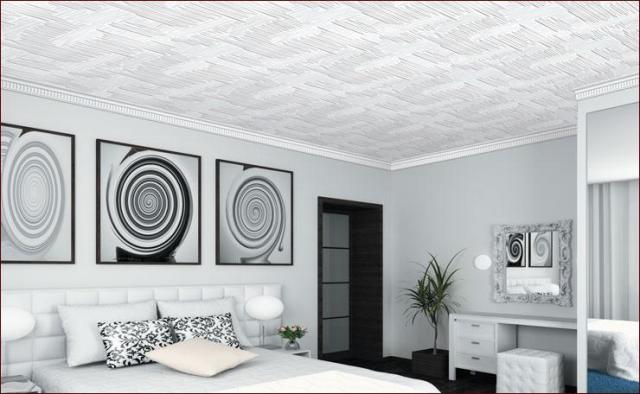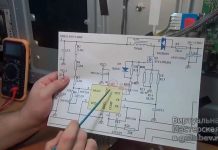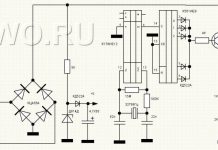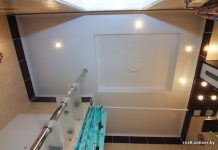If you have difficulties with the selection of paint, then you can find out which paint to choose for walls and ceilings from our article.
After such a thorough renovation, the ceiling will be smooth and beautiful. The next repair will be required no earlier than 10 years later.
The overall impression of the space depends on the appearance of the ceiling structures, and repairing the ceiling on your own saves money and provides an opportunity to monitor and control the process. The cost of the work depends on their scale.Less costly processes include priming and insulating work. Plastering and puttying are considered more expensive types of work. Before doing repairs in the apartment, it is recommended to choose materials yourself. The most popular ones include painting, wallpapering, whitewashing, as well as hanging and stretch ones. As a rule, when carrying out repairs, all processes begin with the lining of the ceiling surface.
Do-it-yourself ceiling repairs should start with planning and drawing up a simple estimate. For a particular stage of work, the cost of materials will differ.
VIDEO
Preparatory work begins with cleaning the surfaces. In this case, the floors are cleaned in the following ways:
whitewash and old wallpaper are removed with a roller soaked in water and a special spatula. The surface is wetted, and then the remnants of the finish are removed;
the old putty is tested for strength, if it is firmly held, then it is not touched. And the exfoliating material is removed;
paint in the house is properly washed off with a dedicated wash or sandpaper.
After cleaning, priming is performed. This process promotes better adhesion. Before priming, you need to check the surface for joints and seams. All holes are sealed with cement mortar. A roller or brush is used to apply the primer. When the primed layer dries out, the following work is performed.
The do-it-yourself ceiling includes these works. Which alignment option is preferred depends on the skill of the specialist. Plaster will reduce the height of the ceiling by a couple of centimeters and has a significant mass.
The putty is characterized by high shrinkage and is characterized by the application of multiple layers. When plastering, it is recommended to use a gauze bandage or respirator.
Plastering is done correctly in the following way:
using a painter's thread, markings are made for the guide;
holes are drilled for fasteners;
guides are mounted with self-tapping screws. They must be located horizontally and in the same plane;
after setting the guides, they are fixed with a layer of plaster;
the gaps are filled with plaster mixture.
After drying, putty and topcoat are applied to the floors.
The filling is done in a certain way:
several layers of putty are applied on an uneven surface. A wide spatula is used to remove excess mortar;
when a coarse putty is applied, then a special mesh is placed on top;
after the material has dried, finishing filling must be done;
special floats are used to create a leveled surface.
Also, to level the ceiling surface in the apartment, plasterboard panels are finished.
Performing euro renovation of the ceiling surface of rooms, you can meet many problems. One of the most common is the elimination of irregularities. Stretch ceilings are a good method to eliminate such shortcomings. Large holes and seams are removed with polyurethane foam and mortar. The leaks in the apartment are repaired when the floors are well dry.
You can independently eliminate the consequences after a leak in the following way:
wetted areas are brown. They are clearly visible against a white background. If the spot is small, then the defect is eliminated locally;
dismantle the old layer of cladding. The surface is leveled and primed. In this case, the surface is primed twice;
the place of leakage is putty;
after the putty has dried, it is worth determining whether there are still dark stains. If they are visible, then you need to walk on them with matte paint;
after some time, the area of the leak is painted over with a roller. The entire overlapping area is treated with a layer of paint.
While painting the surface, hold the roller in the selected direction.
When choosing a material, it is worth considering all its pros and cons.
Stretch is a fabric made of vinyl chloride film, which is welded using a special technology. Repair of such a structure involves the correction of defects and damage.
In order not to have to redo the euro ceiling, you must follow some rules:
It is forbidden to warm the stretch ceiling in the room to a temperature of more than 65 degrees. After heating, ruptures may appear;
the temperature of rooms with such a design should not fall below zero. Since the canvas may burst;
repairs need to be made if the modern ceiling has been damaged by sharp details;
tension structures can easily withstand a lot of cold water, but not hot. When hit with cold water, the material is simply dried.
After just damage, the stretch ceiling can be repaired:
if there was a cut in the canvas, then in some cases the material can be glued. The cuts are sealed with pieces of cloth tape or fiberglass. Then the area is painted with paint of the same color;
after a leak in the apartment, you need to drain the accumulated water. For this, one corner is dismantled and the liquid is drained. Then the tensioning structures are dried;
if the stretch ceiling is sag, then the web is stretched.
For gaps of up to 20 mm, regular tape is recommended. If patches are used, they must be of the same texture and color as the main euro ceiling. After damaging the web along the seam, it will not be possible to make simple repairs. In this case, the euro structure changes.
Often when repairing a ceiling in a room, surface painting is used. A similar method is suitable for a kitchen or bathroom, as well as for rooms with euro renovation. Painting is carried out after high-quality leveling. To create a beautiful coating, paint of the desired color is selected. Painting is done with a roller or brush. This can be seen in the photo.
Painting is carried out on a separate area or on the entire surface. The slabs are checked for peeling of the previous finish. Damaged areas are treated with a spatula and then painted.
Whitewashing is a simple way to repair the ceiling surfaces of rooms. Overlappings are processed with a spray gun or roller. The material is made from water and quicklime solution.
This finishing method is characterized by fragility.
You can repair the ceilings of rooms with wallpaper. This method is distinguished by a large selection of materials, as well as the ability to select any color. In order to paste over the ceilings, two people are needed. One will hold the canvas, and the second will glue. You will need tools such as a roller, a glue tray and a knife for cutting cloths to decorate rooms.
When making a euro renovation using wallpaper, the following steps are taken:
the floor surface is prepared and the adhesive mixture is diluted;
the required length of the web is cut from the roll;
the canvases are laid out on the floor with a pattern down, and then glue is applied, as shown in the photo;
then the floor surface is smeared with a solution;
wallpaper is applied to the surface and then smoothed;
air bubbles are eliminated with a roller;
it is important to keep track of the coincidence of the picture. Wallpaper dries out for a certain time, within seven days.
Stylish euro finish is made with plastic. Processing with plastic plates is carried out by one person. To work with plastic, you will need a paint cord, a cutting knife and an assembly gun.
Ceilings are finished as follows:
Euro renovation with plastic originates from the definition of the center. Diagonals are drawn from opposite corners. The center is marked at the intersection;
gluing with plastic is performed from the center;
glue is applied along the edges and in the center of the panel. The canvases are mounted on the floor. In this case, the corner of the first element should be located in the corner of the intersection of the diagonals;
then the following plates are mounted;
when working with plastic at the junction of the material with the wall, it is adjusted.
Finishing the repair of the ceiling surface of the rooms, moldings or ceiling plinths are mounted around the entire perimeter.
When making repairs to the ceiling surface of rooms, you should pay attention to drywall. The suspended ceiling made of this material is a reliable and durable surface. Plasterboard is used for the ceiling of various rooms. It is attached to the mounting profiles. The height of the cover depends on the length of the hangers to which the profiles are mounted.
After installation, the seams are putty and primed. All elements are attached with self-tapping screws.
The abundance of materials allows for functional and stylish ceiling coverings. With minimal construction skills, you can do simple DIY repairs.
The ceiling is one of the first to enter the field of vision of a person entering the room. Therefore, it is recommended to put it in order in a timely manner. Do-it-yourself ceiling repair is not too difficult, but some knowledge of construction issues will be needed.
The ceiling is one of the most important elements of the room, so timely care is required for it.
The impression of the interior can be ruined if the ceiling is uneven, dirty or with traces of leaked water, so keeping the ceiling in good condition and repairing it on time is very important. This is not the easiest thing to do, therefore, in order to repair ceilings, they choose the most durable coating of all possible.
The types of ceiling repairs that you can do yourself are different, among the most common methods are the following:
coloring;
whitewash;
wallpapering;
suspended ceiling;
stretch ceiling.
High-quality ceiling decoration will complete the interior of the room.
Each of these types of surfaces has its own advantages and disadvantages, design features, consisting in the cost of repair work, the effort and time spent. Any kind of repair begins with surface preparation. It is necessary to remove the old coating and level the surface with a primer, while repairing the joints and joints on the ceiling. The time and effort spent on cleaning and preparing the surface directly depends on the planned coating as a result. Suspended and stretch ceilings do not require a perfectly flat plane, but it is necessary for painting or wallpaper.
Removing the original cover can only be skipped if the ceiling is being repaired in the room immediately after it was built. In other cases, joints are primed and repaired only after the surface has been cleaned. Most often, old ceilings are covered with whitewash, plaster or wallpaper. Such finishing materials can be removed without much difficulty.
In order to repair the ceiling with your own hands, an ordinary paint roller with a long bar will come in handy. It is moistened in warm water and squeezed so that the water only drips slightly from the surface. When rolling on the surface, before repairing the ceiling, you need to start with a slight pressure, which is increased each time. As soon as there is little water on the roller, it is required to wet it again and repeat the entire operation on the adjacent section of the ceiling.
When repairing, the first step is to clean the ceiling from the old coating.
When an area of 1-2 m² is thus wetted, take a spatula and begin to peel off the soaked whitewash or wallpaper. To make a quality repair, you need to clean it up to the concrete base or to a layer of strong putty.
The found layers of the old putty must be checked for strength using a spatula. A well-adhered coating can be left on the ceiling. If the putty is crumbling and flaking, it is easier to remove it completely and apply a new one.
The most difficult thing is to prepare the ceiling for repair with your own hands, if it was previously painted with water-based or oil paint. This coating can be removed mechanically or chemically. When cleaning with sandpaper or a trowel, a lot of dust is generated. When softening the paint with a special remover, there will be an unpleasant smell in the room all the time until it is completely softened.
A spatula with a thin metal blade can be used to remove decorative elements or styrofoam tiles glued to it from the ceiling. Some types of glue can be removed with great difficulty and only with the help of special tools. If the ceiling is being repaired with tension or suspended structures, you will first need to disassemble and remove them with care so as not to damage.
Once the entire surface of the ceiling has been completely cleaned of the original coating, the pre-primer can be started. First, all seams and joints are checked on the ceiling. They are filled with a solution of plaster or gypsum, which will hold firmly and reliably in them. If the solution in the joints after drying begins to crumble or collapses from light blows, it is better to clean the joints and fill with a solution of a different composition.
Usually a special mortar with the addition of fiber is used for this, which is used in many construction works, gypsum or cement mortar. When the joints are filled, the surface is leveled with the rest of the ceiling plane, the solution is left to dry completely and harden. To strengthen the surface and improve its adhesion, you can apply a deep penetration primer, which is essential for repairing the ceiling. When applying any formulations to the ceiling with a brush or roller, care must be taken to protect the hands and eyes. The primer is left to dry, after which the DIY repair can be continued.
This stage of work is considered a necessity, since concrete slabs are rarely perfectly flat. It is especially critical to approach the putty if the repair of the ceiling will be carried out with wallpaper or painting. Each master makes the choice between putty and plaster independently, focusing on the conditions of the repair. Plaster will reduce the height of the room by 2-3 cm and is heavy. The application of the putty requires several layers, while the material shrinks, which generally requires additional time and is quite difficult to implement.But the repair of ceilings is most often carried out with the help of a putty, since this material allows you to achieve a perfectly flat surface with a minimum weight and a small layer thickness.
Before making repairs to the ceiling with plaster, you need to prepare everything you need:
Plastering tools.
concrete primer;
building mixture;
construction beacons;
rule for 1.5 m;
puncher;
drill;
self-tapping screws;
guides;
construction level.
After the surface of the ceiling is cleaned according to all the rules, 15-20 cm recede from the wall and put a mark on this place for the guide. The second is placed in the same way against the opposite wall. A thread is pulled between them. Then 1, 25 m retreat from the first beacon and repeat the sequence of actions. When the markings are applied to the entire ceiling, you need to drill holes for the fasteners.
Do-it-yourself guides for ceilings are attached to self-tapping screws. At the same time, using a level, you need to carefully ensure that all guides are in the same area and strictly horizontal. The self-tapping screws for adjusting the height can be slightly unscrewed or tightened more. As soon as all the guides are set in the same plane, they need to be fixed with a mixture of plaster, mixed quite thickly, and left to dry completely.
Scheme for the execution of the first and second layer of ceiling putty.
The free space between the guides is filled with a plaster mixture and leveled with a metal rule, focusing on the guides. The process is more complicated than plastering walls, although the sequence of steps is the same. The difficulty lies in the non-vertical surface above the head. When the plaster dries, a flat surface should be obtained, ready for the application of the topcoat.
To make the putty on the ceiling surface you will need:
coarse putty;
finishing putty;
painting net;
primer;
a set of spatulas;
capacity.
Smoothing the surface with a putty takes more time than plastering the ceiling.
It will come in handy with construction and finishing experience in relation to the handling of the tool and knowledge of the properties of the material. If, after the ceiling plate has been cleaned, potholes or large differences in the plane in height are found on its surface, then coarse putty is applied in thick layers on them in the first place. The shrinkage of such a putty is small, while the thickness of the applied layer can reach 5 cm. To level the ceiling plane and eliminate excess material, a rule is used, as well as a wide spatula.
Stages of applying plaster to the ceiling.
When a layer of coarse plaster is applied, a painting net is laid on it, and you need to have time before the composition begins to harden. This is an alternative to reinforcement, which gives the whitewash and the entire plane additional strength. To place the mesh inside the putty layer, press it inward over the entire surface of the ceiling, passing it with a slight pressure with a wide spatula.
If the ceiling surface can be considered flat and does not have large distortions and potholes, you can immediately use a fine, finely ground putty on it. It is applied with a wide spatula, the excess material is removed in the same way. Using a fine filler, you can use a paint net to further reinforce the ceiling. When the base layer of the putty dries completely, you can apply the finishing layer of the putty and level the surface completely.
In order to obtain a surface that is perfectly flat and ready for painting work, specially designed for leveling floats are used, sheathed with sandpaper on top.When the surface is leveled and sanded according to all the rules, checked by the level, you can apply wallpaper or paint to it, whitewash according to the original plan.
All tools and consumables for repair work on painting the ceiling are easy to get, no special skills or experience are required to use them. In rooms such as a bathroom or kitchen, a painted ceiling is the most practical way to maintain a high-quality finish for a long time. The surface to be painted must be perfectly leveled, since the slightest irregularities on the painted surface are striking. To carry out the work required:
Usually the ceiling is painted with oil or water-based paints, pre-mixing them to the desired degree of density. The painting starts from the corners and edges of the room, carefully painting over them with a brush. The remaining area is painted over with a roller. It is necessary to put at least 3 layers, letting each layer dry out, so that the coating turns out to be of high quality and durable.
VIDEO
Until recently, the most common type of repair was precisely whitewashing the ceiling and walls. The surface, whitewashed in compliance with all quality requirements, is suitable for any interior. But whitewashing the ceiling is much more difficult than painting it. The whitewash composition is most often made from quicklime, stirred with water and filtered through a fine sieve, after which the solution is ready to be applied to the ceiling or wall. Roller, brush and spray gun are used for work. Application with a brush or roller must be done in several layers, otherwise the coating will not be uniform enough, the spray gun is therefore considered the best option.
Ceiling whitewash cannot be considered as durable as painting. At least once a year, the whitewash must be renewed or simply cleaned off completely and reapplied.
VIDEO
But at the same time, whitewashing the ceiling is a budget option, since the materials are available and inexpensive.
That is why the greatest attention is paid to its decoration.
The work can be done independently, but observing the maximum accuracy and knowledge of the matter. Modern materials and finishing methods are able to provide the ceiling with attractiveness and originality.
The final quality of the ceiling finish after renovation depends on the thoroughness of the preparation of the substrate surface and the type of coating chosen. Several types of ceilings can be arranged in a residential area:
Covering and adhesive options. The first type includes painting and whitewashing, as well as decorative plaster and liquid wallpaper. The second option is realized by pasting with wallpaper, plastic tiles and other facing materials. These ceilings require particularly careful surface preparation. The base must be perfectly flat and smooth. Even minor defects are not allowed.Sewn and suspended structures. In these cases, another ceiling is formed under the ceiling base. It is attached to the frame (sheathing) and can be made of sheet and tile materials, boards, panels, cassettes, slats, lining, etc. This type "eats up" the height of the room, but does not require careful leveling of the surface. This is especially important in the presence of difficult-to-level ceilings.Tensile structure. The final ceiling is formed by stretching the canvas (textile or film), and the supporting frame is located on the walls. This design also does not require careful leveling of the surface.In general, the preparatory stage for the repair of the ceiling includes the following activities: clearing the site for work; cleaning the ceiling from dirt and dust; removal of the old coating; elimination of defects and sealing cracks; leveling the surface; primer.
Particular attention is paid to the removal of grease stains, mold and mildew. The affected areas of overlap must be treated with an antiseptic. Wooden floor elements are impregnated with anti-rotting compounds.
Regardless of the type of ceiling, it is recommended to completely get rid of the old coating. It is removed especially carefully when planning cover or adhesive variants. The following techniques are used:
Whitewash. Chalk or limescale coatings are thoroughly washed off with water. To do this, using a paint roller with a foam rubber coat or a spray bottle, the surface is abundantly moistened, and then the whitewash is cleaned off with a sharp spatula. The wallpaper is removed in the same way.Painting. Different methods are used depending on the adhesion strength of the old paint. The simplest one is similar to the previous option - double, abundant moistening with an interval of 15-20 minutes and removal of the swollen paint with a hard, sharp spatula. If the paint does not give in, then the chemical method is used. It is best to use special removers for water-based or alkyd paint. Dissolution of especially durable coatings is provided by such aggressive liquids: hydrochloric acid solution (2-3%); a mixture of lime with drying oil (20: 1), brought to the desired consistency with water; thick water-lime solution with denatured alcohol (40-50 ml / l).Tiled flooring. It is removed with a hard spatula. Remains of glue on the ceiling surface are removed mechanically using an emery cloth or sanding mesh.Suspended, hemmed and tensioned structures are removed by systematic dismantling of the coating and sheathing (frame). When removing the dowels, you must be careful not to increase the size of the damage.
If it is necessary to ensure a perfectly flat ceiling surface for finishing, the alignment is carried out in several stages:
After carrying out all the above measures, it is necessary to give time for the complete curing of the coating. After 2-3 days, you can start finishing the ceiling.
VIDEO
To carry out preparatory work with your own hands, you should take care of such a tool in advance:
puncher;
electric drill;
screwdriver;
Bulgarian;
sander or mesh;
spatulas 25, 50, 100 and 150 mm wide;
Master OK;
rule;
paint roller;
paint brush;
screwdriver;
chisel;
chisel.
It is necessary to prepare containers for the preparation (mixing) of solutions and their delivery to the ceiling, convenient for work. Measurements and quality control are provided with a tape measure, a metal ruler, and a building level. A laser type level is best suited. Do not forget about protective measures - glasses, gloves, respirator when grinding.
If the surface of the ceiling, after appropriate preparation, has become perfectly flat, then you can proceed with the final finishing to give an attractive appearance. Most often it is provided in the following ways:
The considered adhesive and cover methods are the simplest for DIY ceiling repair. They provide an attractive appearance and harmonize well with various design solutions.
VIDEO
Sewing and suspended structures have a number of advantages: perfect alignment of any ceilings, unlimited design possibilities, the ability to provide additional heat and sound insulation. Their use is limited by their increased cost, a decrease in the height of the room, and an increase in the labor intensity of installation.
The most popular options are:
These ceilings may have different designs, but their installation principle is the same. A lathing made of metal (aluminum) profiles or wooden beams is mounted on the ceiling.
It is fastened with dowels. To do this, first, using a perforator or an electric drill, holes are made into which plastic dowels are driven. The elements of the lathing are fixed with screws. Next, the frame is revetted with the required material.
VIDEO
Stretch ceilings are the most difficult to do-it-yourself installation. However, they have an attractive appearance and are capable of fulfilling all the functions of a false ceiling. At the same time, they eat less the height of the room. They are based on fabric or PVC fabric.
To tension it on the wall, stepping back 10-12 cm from the ceiling, a supporting frame made of a metal profile is fixed. The ends of the web are inserted into the corners of the frame and tightened. Then, its edges are pushed into the middle of the frame and the final stretching and alignment is performed.
The plastic (PVC) film is stretched with preheating. For this, heat guns are used. When cooled, the material shrinks, which ensures its complete straightening.
Video (click to play).
Repair of the ceiling in a residential area can be done by hand. For this, it is necessary to carefully carry out preliminary work on leveling the surface. External finishing can be done in different ways to give the desired appearance. Which finishing option to choose depends on the quality of the ceiling base, the size of the ceiling and financial capabilities.













